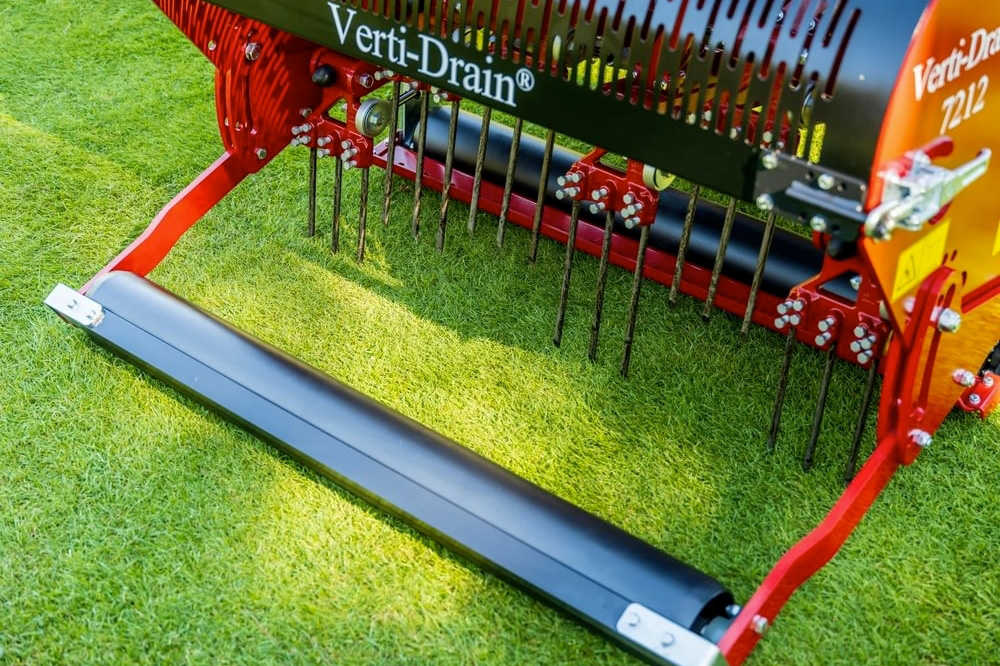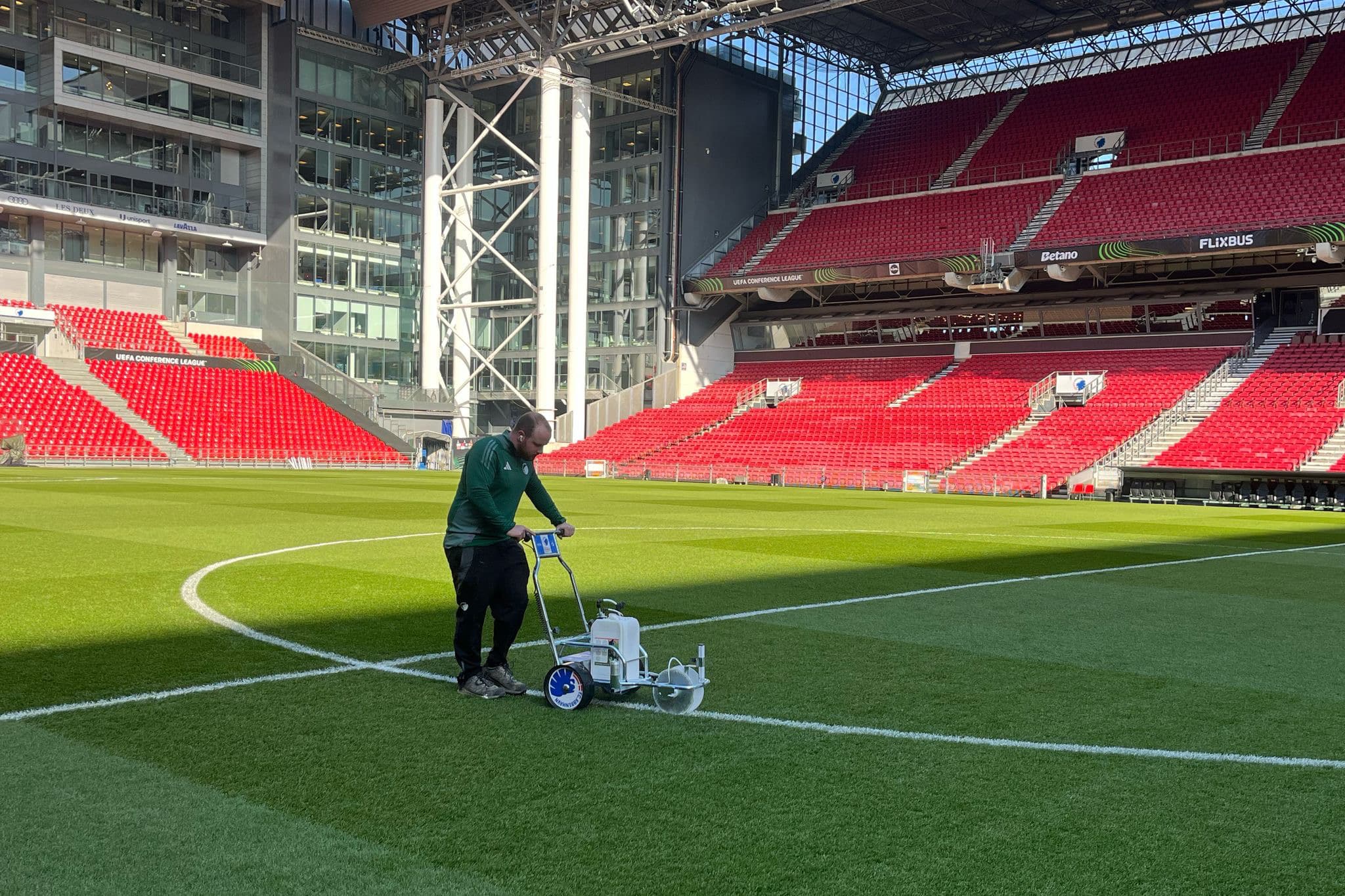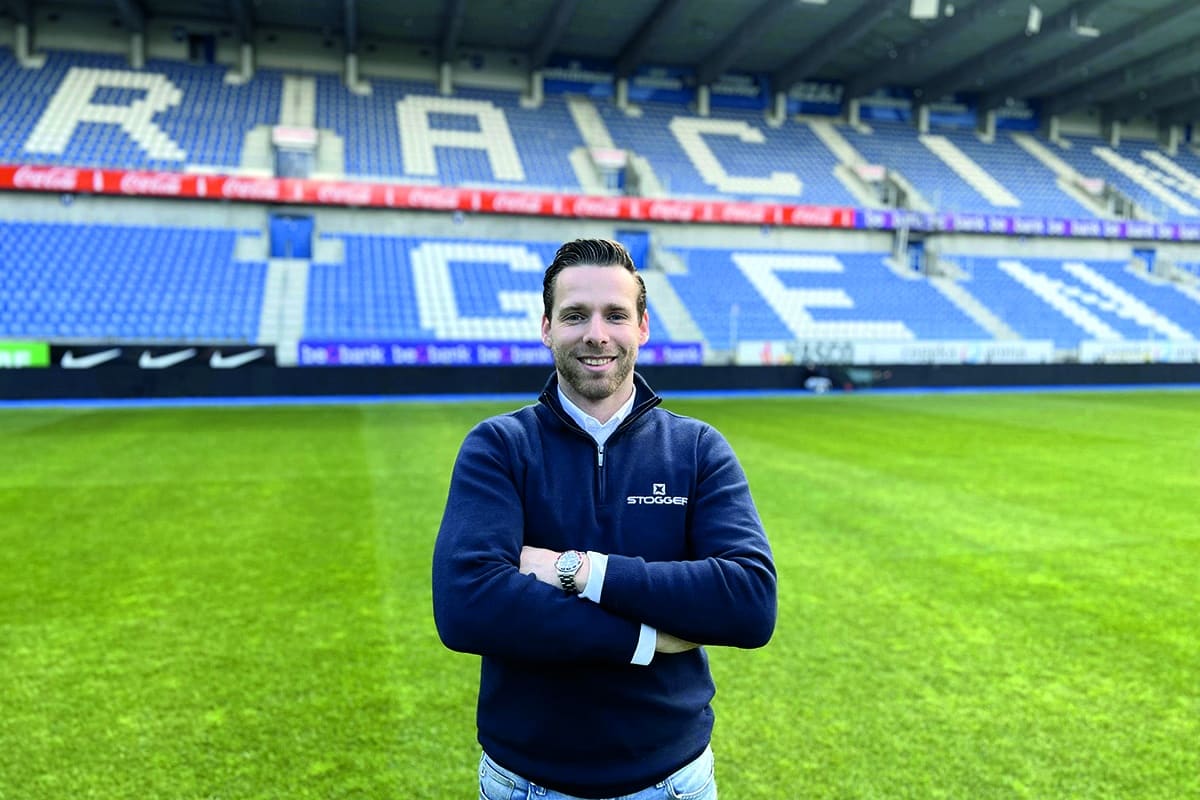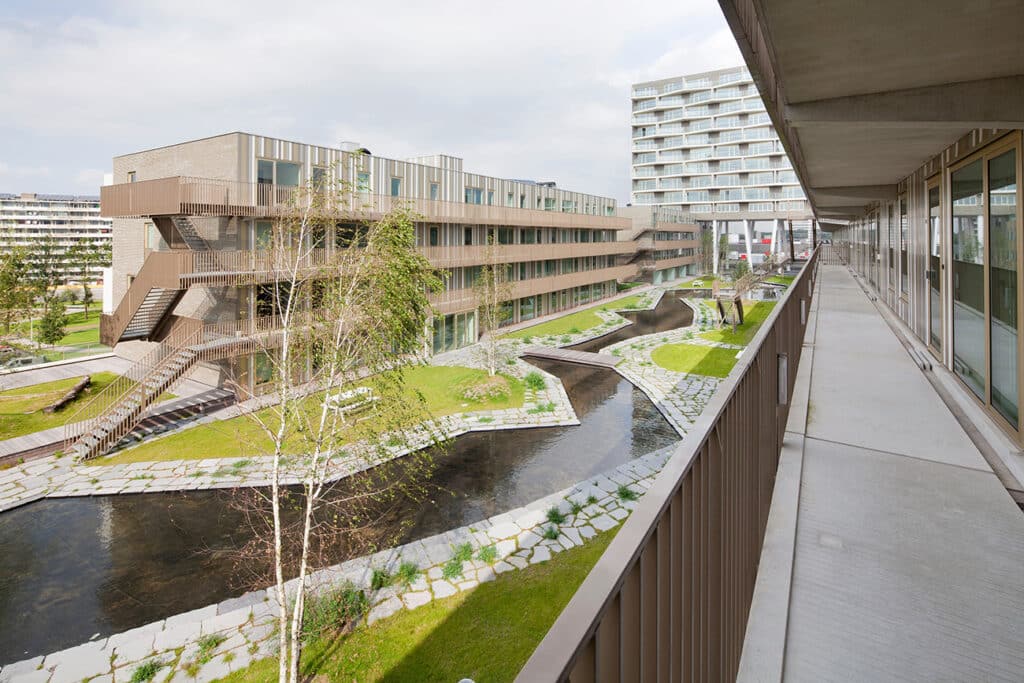
Retention roofs as sustainable solution for smart water management
800 to 950 millimeters. This is the average amount of precipitation per year in Belgium and the Netherlands. However, these values hide a disturbing trend of rain showers that are becoming increasingly intense, combined with longer periods of heat and drought. So the message is to retain as much rainwater as possible on one's own property and delay its discharge. Under the name ZinCo Meteo Active, ZinCo developed several basic retention roof systems.
"Torrential downpours with an intensity of 60 to 100 milliliters per hour have long since ceased to be an exception in Belgium and the Netherlands," says Michiel van de Bunt, business manager of ZinCo. "In combination with a high degree of urbanization, this increasingly leads to flooding, because existing sewage systems are not dimensioned for these large amounts of rainwater in such a short period of time. At the same time, past summers prove that we will increasingly have to reckon with long periods of heat and drought. This complex situation of too much or too little rainwater makes us think about new ways to achieve water retention on our own property. With our Meteo Active concept, we offer innovative solutions for using green roofs as water buffers and retention devices."
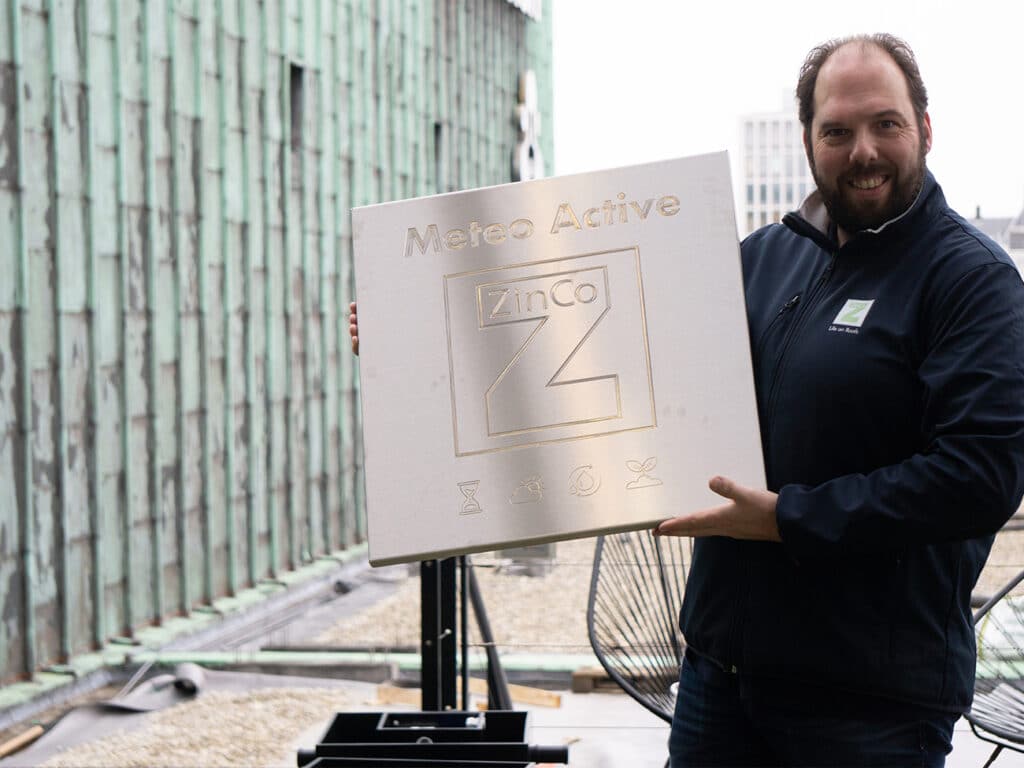
Supply and demand
"Today in cities and towns, rainwater is discharged via paved surfaces - streets, squares and roofs - directly into the sewer system," outlines Michiel van de Bunt. "During normal rainfall amounts this is not a problem, but during heavy showers the sewer system often cannot swallow this enormous mass of rainwater. By storing maximum water and discharging it later, we can reduce that peak load."
"On the other hand, we see that the need for (rain) water is high during dry periods. As the environment heats up, the available water evaporates quickly and plants suffer. At such times, a reserve amount of previously drained rainwater would be very welcome."
Buffer or retention?
"Classic facilities, such as rainwater cisterns, wadis or unpaved areas, certainly continue to prove their usefulness," Michiel van de Bunt points out. "Green roofs can also make a positive contribution to preventing flooding as a water buffer. Here we have to make the distinction between buffer and retention, two concepts that are often confused with each other."
"When buffering rainwater, we look primarily at the plants and the underlying substrate and drainage layer, which hold water like 'sponges.' Through evaporation, the water returns to the atmosphere or is released to the sewer system in a delayed manner. With retention, under the construction of a green roof or roof garden - without slope! - an open space is created where water can rise and fall in a controlled manner. Both passive and active water retention are possible."
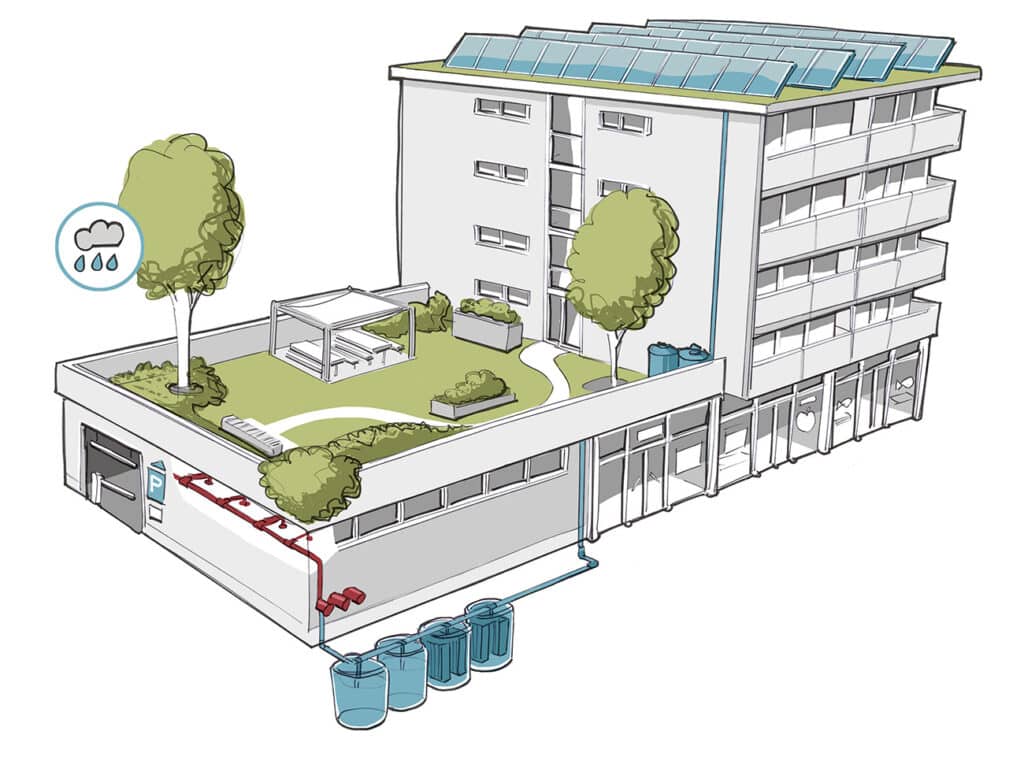
From passive retention...
"Many blue roofs are passive roof systems," explains Michiel van de Bunt. "Rainwater is collected in the storage area of the roof, after which it drains at a fixed flow rate. Via a so-called run-off control in the roof system, you can determine the size and emptying time of the water retention. A disadvantage of passive water retention, however, is the short residence time of water on the roof. Water flows off at a fixed flow rate, making it unusable for the green roof at a later time."
...to active retention: Meteo Active
Want better control of roof runoff, with added focus on plant water needs? Then active water retention comes to mind.
"Our ZinCo water management system is called Meteo Active, which determines, based on pre-programmed 'if this, then that' parameters, whether rainwater should remain on the roof and when it should drain. For example, current weather information is an important source in controlling Meteo Active. An intense rain shower that is coming or predicted frost help determine what the system should do. Because active water retention retains water for as long as possible, water is usually available for irrigation and evaporation. As a result, the system also contributes to cooling during periods of heat stress."
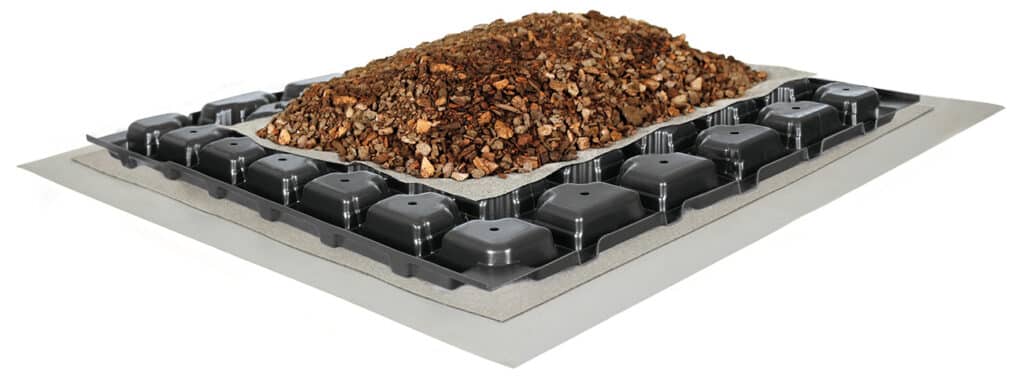
RegENergy as 'next level'
Within the 'RegENergie' concept, Meteo Active becomes an active part of the heat system within a building," concludes Michiel van de Bunt. "We harvest the thermal energy from the rainwater, with which underfloor heating, radiators and hot tap water can be realized. In summer, the reverse is possible, namely cooling a building. Thanks to this sustainable approach, we become less dependent on gas-powered applications. With ZinCo, we are investing heavily in this innovative technology."
